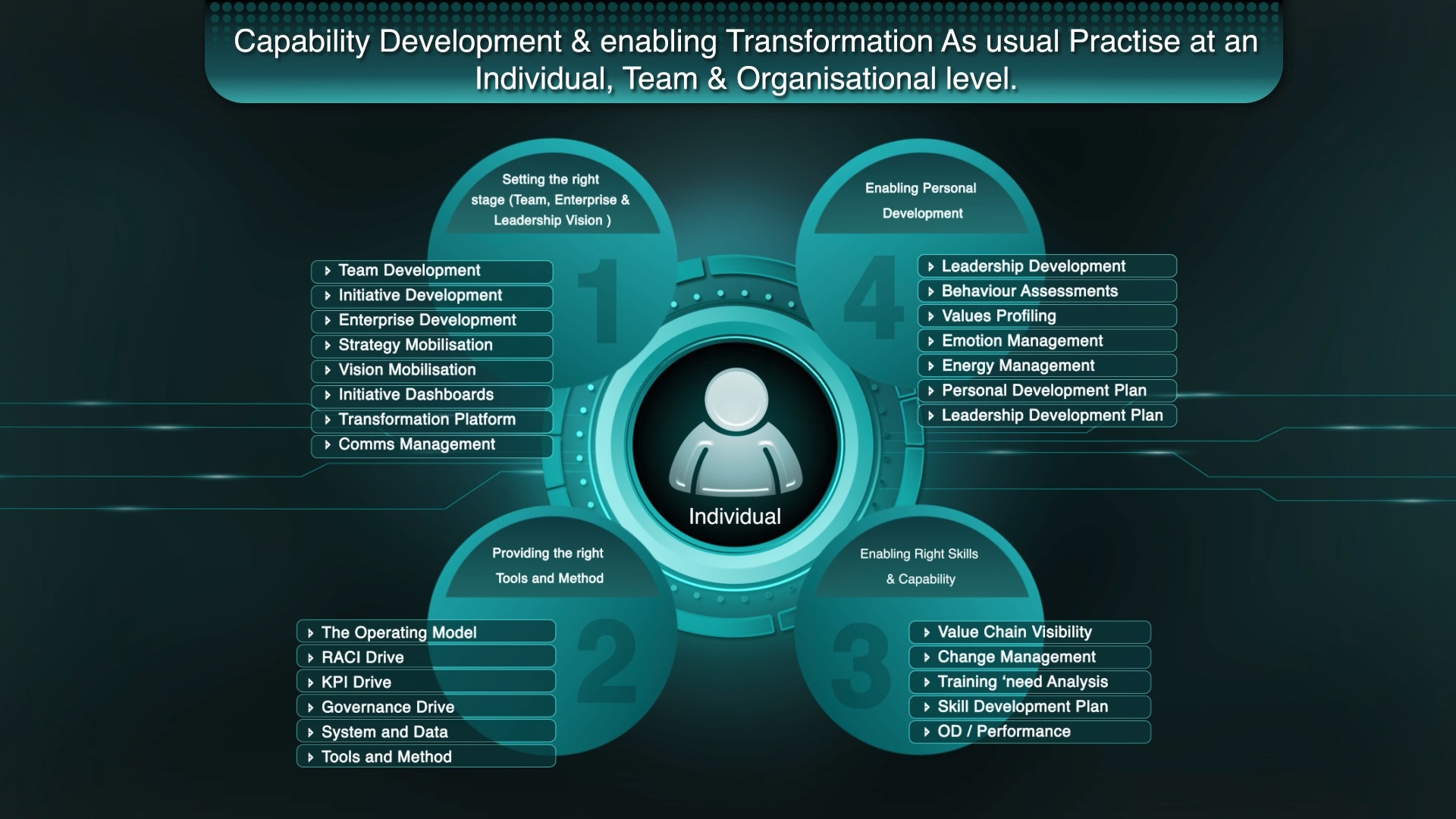Retail Supply Chain – Enterprise Business Transformation
An Introduction To Our Retail Supply Chain Platform
Modus Business Transformation Core Modules
Building, Driving and Sustaining your Business Transformation and embedding a 'Transformation As Usual' platform.
*01 - Business Model Management Hub in Modus ETP for Retail Supply Chain Enterprises
Transform your Retail Supply Chain enterprise with the Business Model Management Hub in Modus ETP. Adapt, optimize, and grow your business effortlessly.
Key Features:
• Business Model Canvas Integration: A dynamic tool to map and visualize the
entire business model, including suppliers, logistics, and sales.
• Value Chain Mapping: Comprehensive value chain modeling to track the
flow from procurement to final delivery, identifying key dependencies.
• Scenario Planning and Simulation: Allows for testing different business
model scenarios, such as supply chain disruptions or new product launches.
Benefits:
• Optimized Supply Chain Efficiency: Streamlines operations by integrating
processes and data, reducing waste, and improving the flow of goods from
suppliers to shelves.
• Cost Reduction: Enhances financial performance by identifying cost-saving
opportunities across sourcing, logistics, and inventory management.
• Faster Response to Market Changes: Agility in adapting the business model
ensures quicker responses to market demands, allowing for better customer
service and inventory turnover.
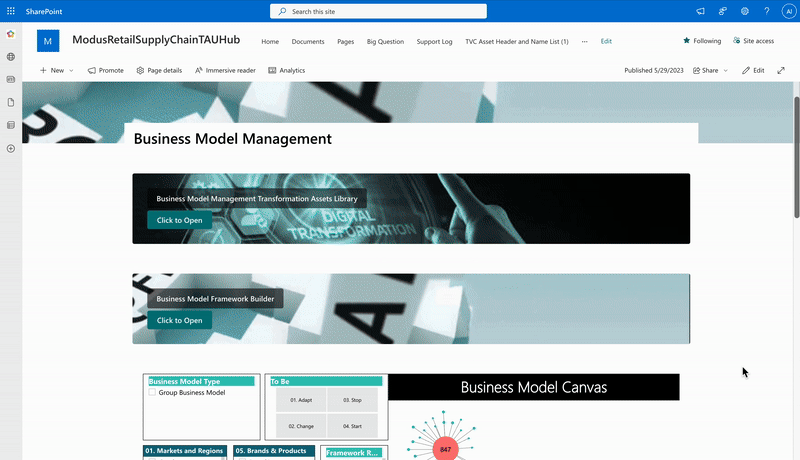
Importance:
• Alignment with Strategic Goals: Ensures that all operational decisions within
the supply chain align with broader business objectives, like cost-efficiency
or sustainability.
• Enhanced Decision-Making: Provides a clear view of the entire supply chain,
allowing stakeholders to make informed decisions based on real-time data
and predictive analytics.
• Resilience in Disruptions: By enabling scenario modeling and contingency
planning, the hub prepares retail supply chains to handle unexpected
disruptions, like supplier shortages or logistics delays.
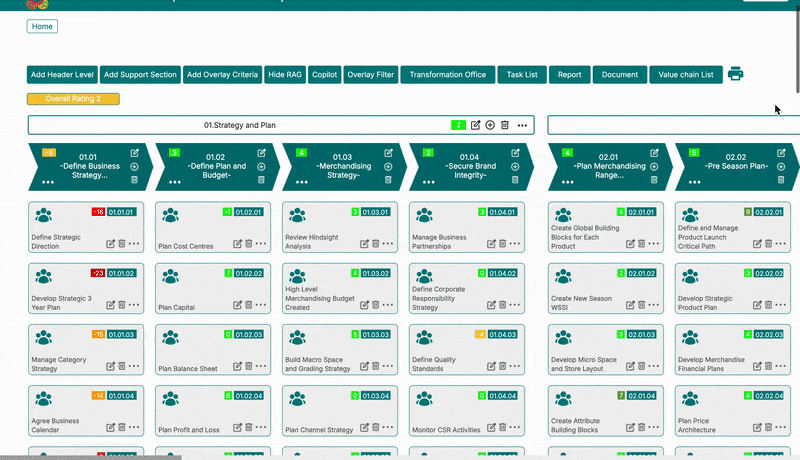
Benefits:
• Improved Supply Chain Agility: Quickly adapt to changes in demand, market
conditions, or supplier issues, ensuring smooth operation and minimizing downtime.
• Enhanced Efficiency: Streamlines processes by eliminating bottlenecks and
optimizing workflows, leading to cost savings and faster delivery times.
• Risk Mitigation: By modeling and adapting to different scenarios, businesses
can minimize the impact of supply chain disruptions, improving overall
resilience.
*02 - The Value Chain Modeler - Manage and Adapt
Transform your Retail Supply Chain enterprise with the Value Chain Modeler in Modus ETP. Understand, optimize, and grow your business seamlessly.
Key Features:
• End-to-End Value Chain Mapping: Provides a comprehensive view of the
entire supply chain, from procurement to delivery, ensuring transparency at
each stage.
• Dynamic Process Visualization: Offers real-time visualization of the flow of
goods, services, and information across the value chain, helping identify
bottlenecks and inefficiencies.
• Scenario Analysis: Enables testing of different "what-if" scenarios, such as
changes in demand, supplier disruptions, or logistical constraints, to assess
their impact on the supply chain.
Importance:
• Holistic Supply Chain Visibility: Provides a full picture of all processes, from
sourcing raw materials to final retail distribution, helping businesses manage
and optimize each segment.
• Proactive Risk Management: By simulating potential disruptions, the value
chain modeler helps businesses anticipate risks and create contingency
plans, increasing resilience.
• Operational Efficiency: Identifies inefficiencies and redundancies within the
supply chain, driving optimization of processes and resource use.
*03 - The Operating Model - Organize and Sustain
Transform your retail supply chain enterprise with the Operating Model in Modus ETP. Organize, sustain, and optimize your operations for ongoing success.
Key Features:
• Defined Process Framework: Provides a structured approach to organizing
supply chain processes, from sourcing and procurement to distribution and
retail operations.
• Real-Time Operating Model: Tracks and monitors live operations, ensuring
that the current state of the supply chain is always visible and up-to-date.
• Integrated Performance Metrics: Includes key performance indicators (KPIs)
for monitoring efficiency, cost-effectiveness, and delivery times across all
supply chain stages.
Benefits:
• Optimized Efficiency: Streamlines supply chain processes, reducing
redundancies and improving the flow of goods, information, and resources,
leading to lower operational costs.
• Sustained Performance: Embeds a framework for continuous improvement,
ensuring that supply chain performance remains high even as business
scales or market conditions evolve.
• Increased Agility: Enables quick adjustments to the operating model in
response to changes in demand, supply, or logistics, minimizing disruptions
and improving response times.
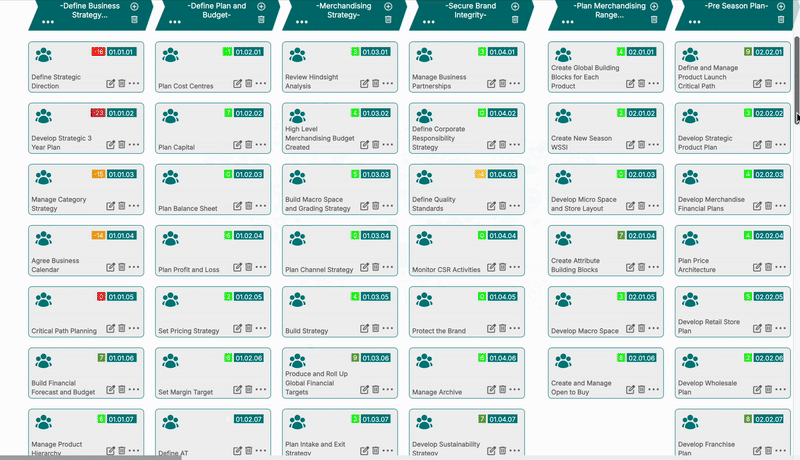
Importance:
• Operational Consistency: Ensures that all supply chain functions—from
supplier management to retail fulfillment—are aligned and operating under a unified framework, promoting consistency across the business.
• Sustainability in Operations: Embeds sustainable practices, such as
optimizing resource use and reducing waste, to ensure long-term operational
efficiency and environmental responsibility.
• Strategic Alignment: Aligns day-to-day operations with broader business
strategies, ensuring that supply chain activities support overall company
goals, such as cost savings or customer satisfaction.
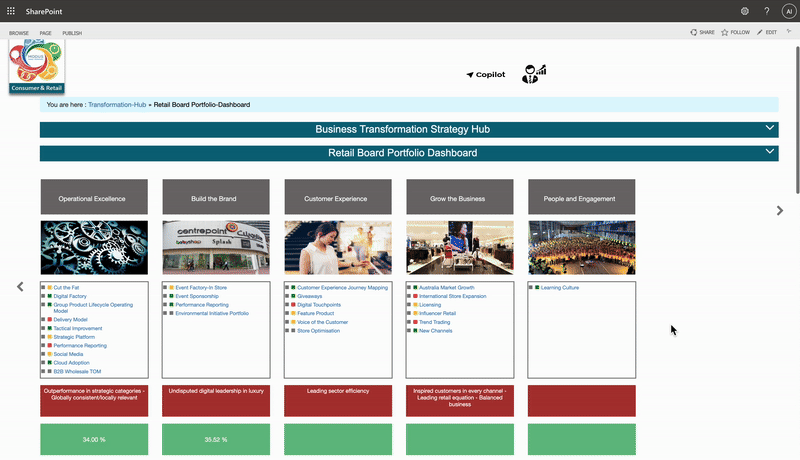
Benefits:
• Accelerated Transformation: Speeds up transformation initiatives by
providing predefined tools and frameworks, allowing retail supply chain
enterprises to implement changes quickly and efficiently.
• Resource Optimization: Ensures efficient use of resources by managing
project timelines and avoiding duplication, leading to cost savings and better
project delivery.
• Enhanced Decision-Making: Offers real-time data and insights into project
progress, helping leadership make informed decisions to keep
transformations on track.
*04 - The Transformation Assets and Portfolio Module - Discover and Transform
The Transformation Assets and Portfolio Module, a core part of the Modus Enterprise Transformation Platform (ETP), helps retail enterprises streamline operations and achieve their transformation goals. It provides a library of templates and methods for a structured, efficient approach to execution.
Key Features:
• Centralized Asset Repository: Houses all transformation tools, templates,
methodologies, and best practices for quick access and consistent
application across supply chain initiatives.
• Portfolio Management: Tracks and manages a portfolio of transformation
projects, providing real-time visibility into progress, resource allocation, and
milestones.
• Scenario Planning and Forecasting: Enables detailed scenario analysis to
forecast outcomes and evaluate the impact of proposed changes on the
supply chain.
Importance:
• Comprehensive Oversight: Provides full visibility into ongoing transformation
efforts, enabling businesses to prioritize key initiatives and track progress
across the supply chain.
• Streamlined Transformation: Centralizes the management of all
transformation assets, reducing duplication of efforts and ensuring
consistency in execution.
• Risk Management: Facilitates better risk management by enabling scenario
planning and monitoring key milestones, ensuring timely interventions when
needed.
• Value Chain Analysis
• Business Model Analysis
• Transformation Strategy
• Transformation Mobilisation
• Planning Management
• Transformation Log Management
• Financial Management
• Communication Management
• Operating Model Management
• Process Design Management
• IT Design Management
• Build and Test Management
• Implementation Management
• Change Management
• Personal Development Assessments
• Training Management
• Organizational Design Management
• Transformation Review
• Optimization and Governance
5. Organizational Change Management in Modus ETP
Transform your retail supply chain enterprise with Organizational Change Management in Modus ETP. Unite, thrive, and achieve your change goals with confidence.
Key Features:
• Structured Change Methodology: Provides a standardized framework for
managing organizational changes, from planning to execution, ensuring
consistent practices across the supply chain.
• Role-Based Change Adoption: Aligns changes with specific roles and
responsibilities, ensuring that employees across various functions from
warehouse staff to retail managers are well-prepared.
• Integrated Communication Tools: Facilitates effective communication
through built-in channels, ensuring timely updates and clear messaging
throughout the transformation process.
Benefits:
• Smooth Transitions: Reduces resistance to change by involving employees
in the process, providing training, and ensuring they understand the benefits,
leading to faster and smoother transitions.
• Improved Operational Efficiency: Ensures that changes, such as system
upgrades or new processes, are adopted efficiently, leading to improvements
in overall supply chain performance.
• Sustained Change: Embeds change management practices within the
organization, ensuring that changes are not only implemented but also
sustained over the long term, supporting ongoing transformation efforts.
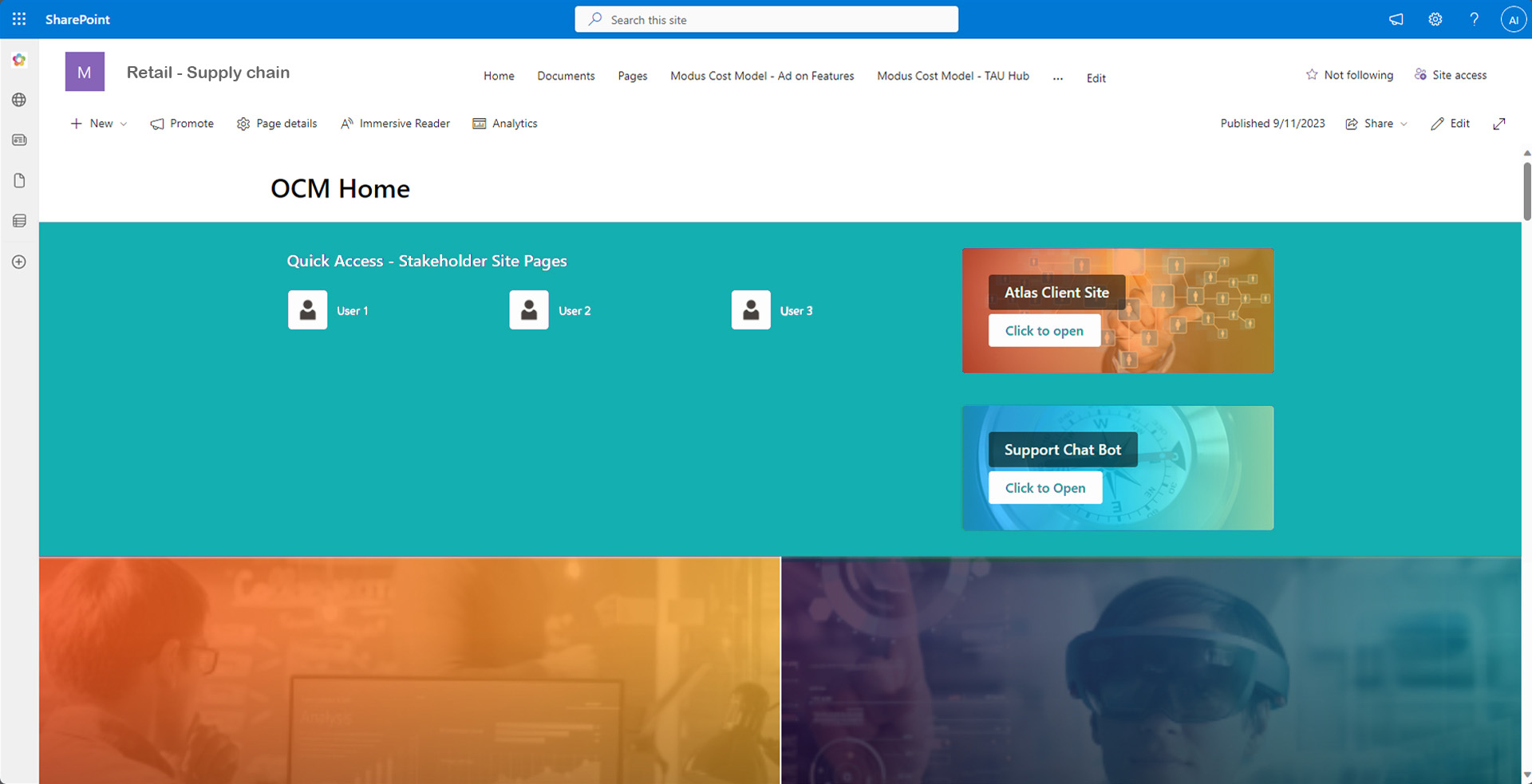
Importance:
• Minimizing Disruption: Ensures that changes, such as new technologies or
process improvements, are introduced smoothly without disrupting day-to-
day operations across the supply chain.
• Employee Buy-In and Adoption: Engages employees at all levels of the
supply chain, ensuring they understand and are equipped to embrace
changes, leading to more successful transformation outcomes.
• Coordinated Change Management: Enables the seamless management of
complex transformations, especially when multiple changes are being rolled
out across various supply chain functions and locations.
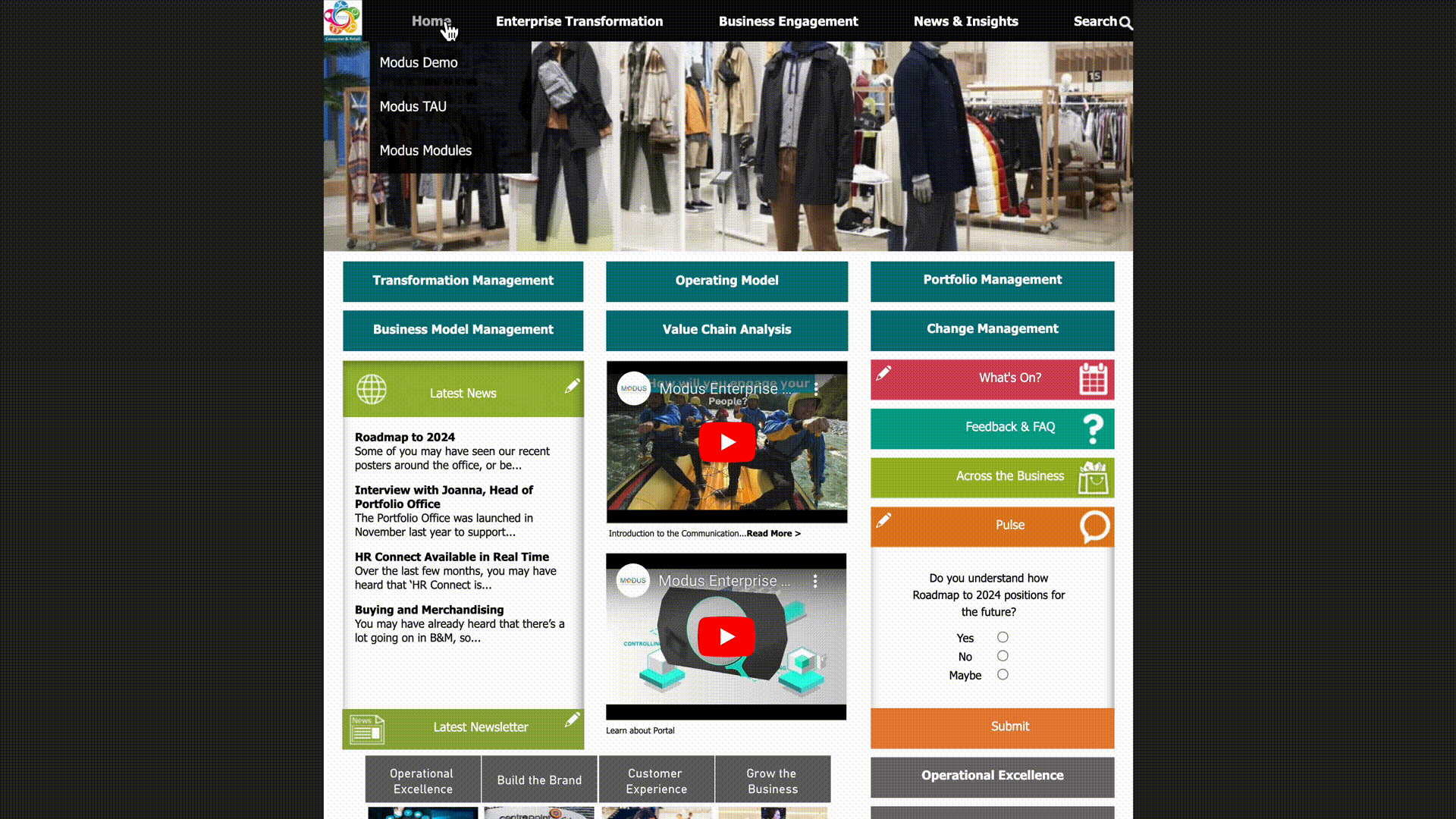
Importance:
• Improved Communication Flow: Ensures clear and consistent
communication across all levels of the supply chain, preventing
miscommunication or delays in decision-making.
• Enhanced Collaboration: Facilitates teamwork by allowing different supply
chain functions (e.g., logistics, warehousing, retail) to work together
efficiently and share insights in real time.
• Stakeholder Alignment: Keeps all stakeholders—internal teams and external
partners such as suppliers—informed and aligned with the supply chain
strategy, reducing confusion and errors.
*06 - Engagement Hub - Share and Guide
Transform your retail supply chain enterprise with the Engagement Hub in Modus ETP. Centralize communication, stay informed, and guide your teams through successful transformations.
Key Features:
• Centralized Communication Platform: Provides a single hub for sharing
updates, guidelines, and key information across all supply chain locations
and teams.
• Collaborative Tools: Enables seamless collaboration between different
departments—procurement, logistics, inventory, and retail—by providing
shared access to data, documents, and schedules.
• Real-Time Updates and Alerts: Sends real-time notifications and alerts to
keep teams informed about critical supply chain events, such as shipment
delays or stock shortages.
Benefits:
• Increased Operational Efficiency: By centralizing communication and
enabling collaboration, the Engagement Hub reduces operational silos,
improving workflow efficiency across the supply chain.
• Faster Issue Resolution: Real-time alerts and updates allow teams to
address potential issues, such as stock-outs or delivery delays, more quickly,
minimizing disruptions.
• Enhanced Stakeholder Engagement: Ensures that all employees and
partners are actively involved in supply chain processes, leading to better
coordination and execution of tasks.
Transformation As Usual Capability Model
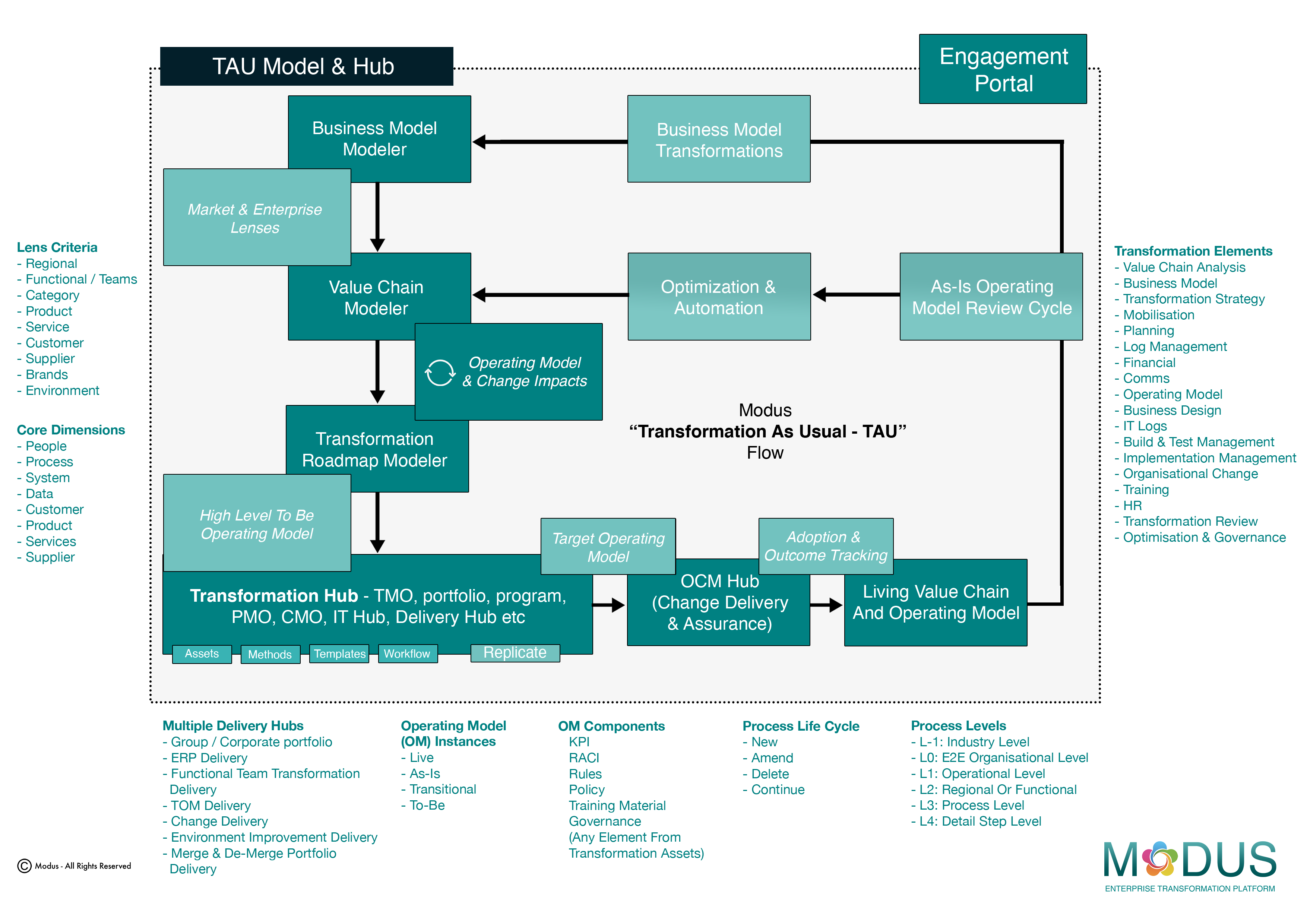
Individual and Team Capability Development
